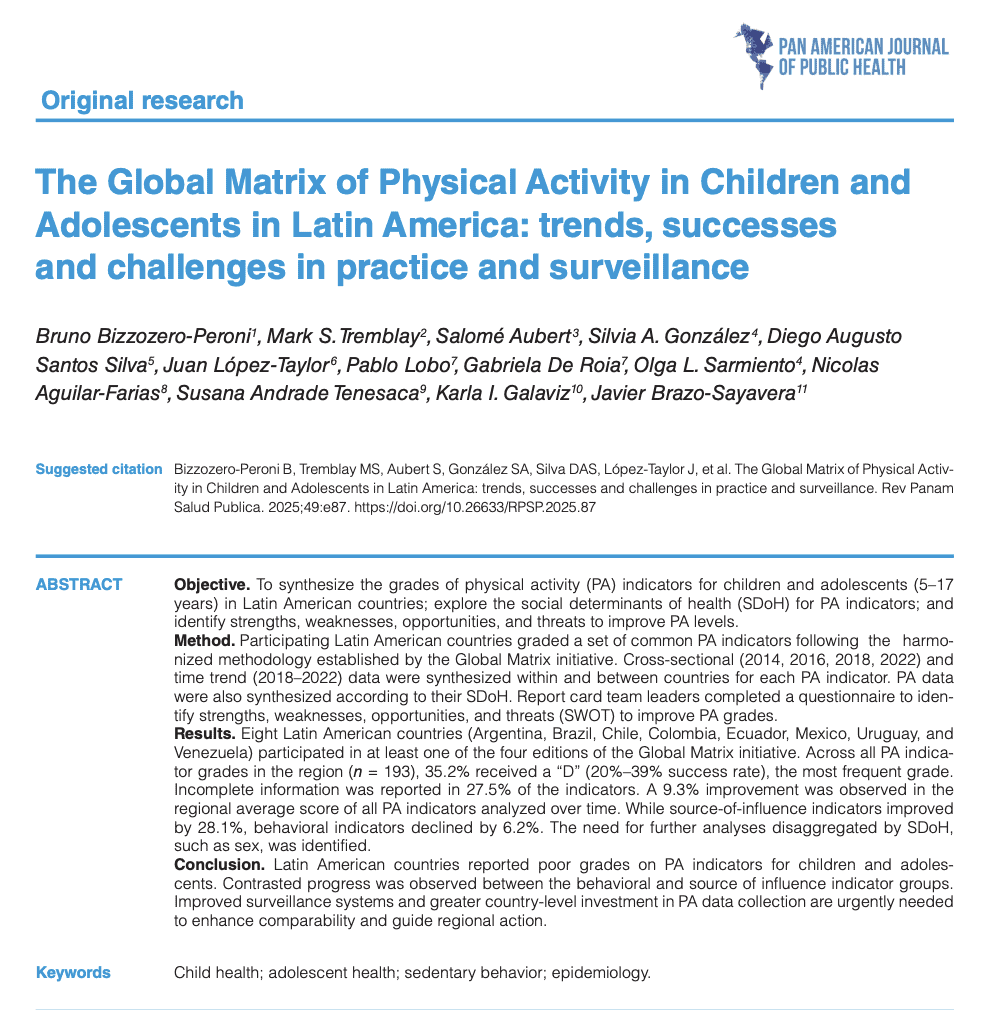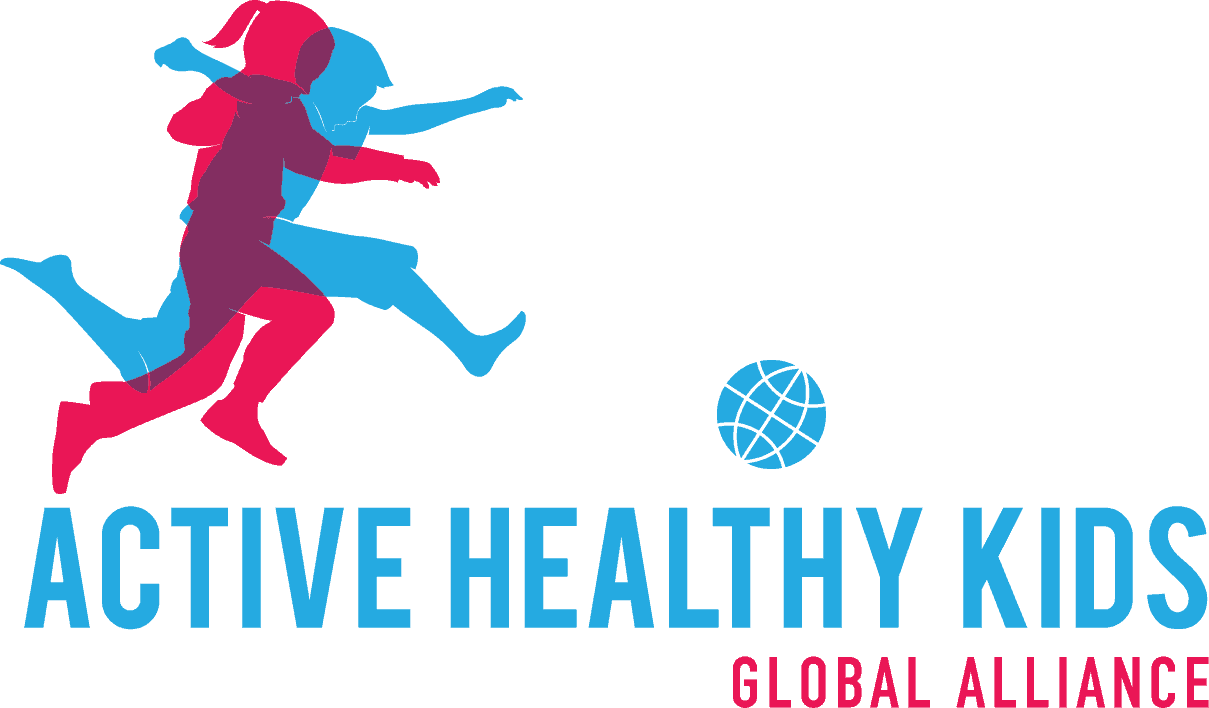
11 Aug The Global Matrix of Physical Activity in Children and Adolescents in Latin America: trends, successes and challenges in practice and surveillance
Congratulations to many AHKGA members on their recent publication “The Global Matrix of Physical Activity in Children and Adolescents in Latin America: trends, successes and challenges in practice and surveillance” recently published in the Pan American Journal of Public Health! The abstract and citation are listed below.
Abstract
Objective. To synthesize the grades of physical activity (PA) indicators for children and adolescents (5–17 years) in Latin American countries; explore the social determinants of health (SDoH) for PA indicators; and identify strengths, weaknesses, opportunities, and threats to improve PA levels. Method. Participating Latin American countries graded a set of common PA indicators following the harmonized methodology established by the Global Matrix initiative. Cross-sectional (2014, 2016, 2018, 2022) and time trend (2018–2022) data were synthesized within and between countries for each PA indicator. PA data were also synthesized according to their SDoH. Report card team leaders completed a questionnaire to identify strengths, weaknesses, opportunities, and threats (SWOT) to improve PA grades. Results. Eight Latin American countries (Argentina, Brazil, Chile, Colombia, Ecuador, Mexico, Uruguay, and Venezuela) participated in at least one of the four editions of the Global Matrix initiative. Across all PA indicator grades in the region (n = 193), 35.2% received a “D” (20%–39% success rate), the most frequent grade. Incomplete information was reported in 27.5% of the indicators. A 9.3% improvement was observed in the regional average score of all PA indicators analyzed over time. While source-of-influence indicators improved by 28.1%, behavioral indicators declined by 6.2%. The need for further analyses disaggregated by SDoH, such as sex, was identified. Conclusion. Latin American countries reported poor grades on PA indicators for children and adolescents. Contrasted progress was observed between the behavioral and source of influence indicator groups. Improved surveillance systems and greater country-level investment in PA data collection are urgently needed to enhance comparability and guide regional action.
Citation
Bizzozero-Peroni B, Tremblay MS, Aubert S, González SA, Silva DAS, López-Taylor J, et al. The Global Matrix of Physical Activity in Children and Adolescents in Latin America: trends, successes and challenges in practice and surveillance. Rev Panam Salud Publica. 2025;49:e87. https://doi.org/10.26633/RPSP.2025.87
Read the article here.
Congratulations to everyone who was involved!


